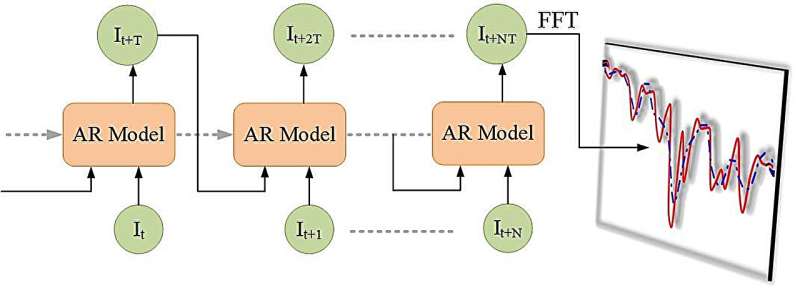This article has been reviewed according to Science X's editorial process and policies. Editors have highlighted the following attributes while ensuring the content's credibility:
fact-checked
proofread
Novel method improves Fourier transform infrared spectroscopy detection of ultra-low concentration trace substances

Recently, a research team led by Prof. Gao Minguang and Associate Prof. Li Xiangxian from Hefei Institutes of Physical Science (HFIPS), Chinese Academy of Sciences (CAS) has developed a spectral resolution enhancement method based on linear prediction theory to expand the application of FTIR (Fourier Transform Infrared Spectroscopy) technology in the detection of multi-component ultra-low concentration trace substances.
The relevant research outcomes were recently published in the journal Measurement.
The FTIR technique has been widely applied in fields like atmospheric pollution monitoring and food and drug safety testing. However, the technology encounters difficulties in the detection of multi-component ultra-trace substances due to limitations in spectral resolution. Effectively enhancing spectral resolution in FTIR technology without changing the spectrograph structure or increasing instrument volume poses a significant technical barrier restricting its broader usage.
In this study, researchers established a spectral resolution enhancement model based on linear prediction and proposed optimization methods for model parameter calculation, order determination, and model prediction. The effectiveness of the model was validated by comparing the resolution enhancement results with the measured high-resolution spectra from the Bruker IFS 125 instrument, yielding a relative error of only 0.28% in spectral feature absorption bands.
Furthermore, various factors associated with the actual interferometric signal may influence the effectiveness of spectral resolution enhancement, including the original signal-to-noise ratio of the interferometric signal, model enhancement factor, and initial resolution.
"With the help of linear prediction-based spectral resolution enhancement method, we effectively identified low-concentration gases in the atmosphere and gas components exhibiting cross-absorption in the mid-infrared region," said Li, "Moreover, for certain gases, the accuracy of concentration inversion can be significantly improved after spectral resolution enhancement."
This research provides valuable theoretical support and analytical tools for further improving the detection accuracy of multi-component ultra-low concentration trace substances, according to the team.
More information: Yusheng Qin et al, Improved high resolution of solar remote sensing spectra based on multi-step linear prediction, Measurement (2024). DOI: 10.1016/j.measurement.2024.114220
Provided by Hefei Institutes of Physical Science, Chinese Academy of Sciences





















